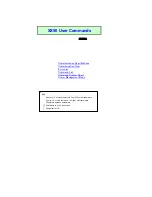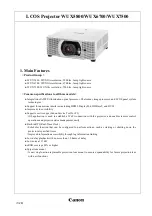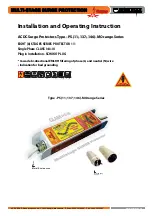
2 Unpacking and Installation
2.0
U
NPACKING
AND
I
NSTALLATION
2.1
Unpacking and Preliminary Inspection
1. Inspect the shipping crate(s) for damage or signs of mishandling before unpacking the unit.
2. Remove any securing bands and cardboard packing and inspect the unit for any obvious
shipping damages.
3. If any damage as a result of shipping is observed, immediately file a claim with the shipping
agency and forward a copy to your local Liebert sales representative.
2.2
Handling Considerations
Larger units are bolted to a shipping pallet to facilitate handling by forklift or pallet jack. Check
the size and weight. Refer to the cabinet data furnished with the unit. Typical size and weights
are referred to in
Table 1
.
2.3
Storage
The unit should be stored in a clean, dry environment. Storage temperature range is -55ºC to
+85ºC (-67ºF to +185ºF). Care should be taken to avoid condensation. All packing and shipping
materials should be left intact until the unit is ready for final installation. If the unit has been
stored for an extended period of time, the unit should be cleaned and carefully inspected before
placing into service.
2.4
Location Considerations
Environment
—The unit is designed for operation indoors in ambient temperatures of -40°C to
+60ºC (-40ºF to +140ºF) with a relative humidity of 0% to 95% (non-condensing).
The unit is provided in an industrial use enclosure that is dust-tight and drip-tight. The unit
should not be installed in areas with excessive dust, corrosive vapors, flammable materials or
explosive atmospheres.
Audible Noise
—The audible noise of the unit is less than 40 dBA at five feet, which allows its
placement in almost any room.
Service Clearances
—Service clearance is needed only at the front of the unit. Thirty-six inches
(36 in or 914 mm) minimum is recommended.
2.4.1 Equipment Performance
For maximum system performance, the unit must be located as close to the protected circuit as
practical to minimize interconnecting wiring length.
For optimum transient surge protection, coordinated surge suppression should be applied at the
service entrance and all other electrical connections to the building (telephone, CATV, etc.), at
known surge generating loads within the building (large motors, arc welders, switched capacitors,
etc.), as well as at sensitive electronic loads (such as computers, electronic appliances, solid state
motor drives, etc.). For interconnected electronic loads (such as by way of data cabling), transient
surge suppression should also be applied to the interconnecting wiring (data cables).
Mounting
—Unit is intended to be wall-mounted. Refer to
Figure 1
or unit submittal drawings
for typical mounting dimensions and weight.
2.5
Door Closing Adjustments
If the surface on which the enclosure is mounted is not flat, the door may not open and close prop-
erly. Also, if heavy equipment is mounted on a large door, the door may sag slightly. If the top of
the door strikes the lip that extends around the body opening, place metal shims behind the
mounting foot that is located at the bottom of the enclosure and closest to the door hinge. Place
the shims between the mounting foot and the wall or mounting surface. Be sure all mounting
screws are tightened securely
Содержание II
Страница 2: ......



































